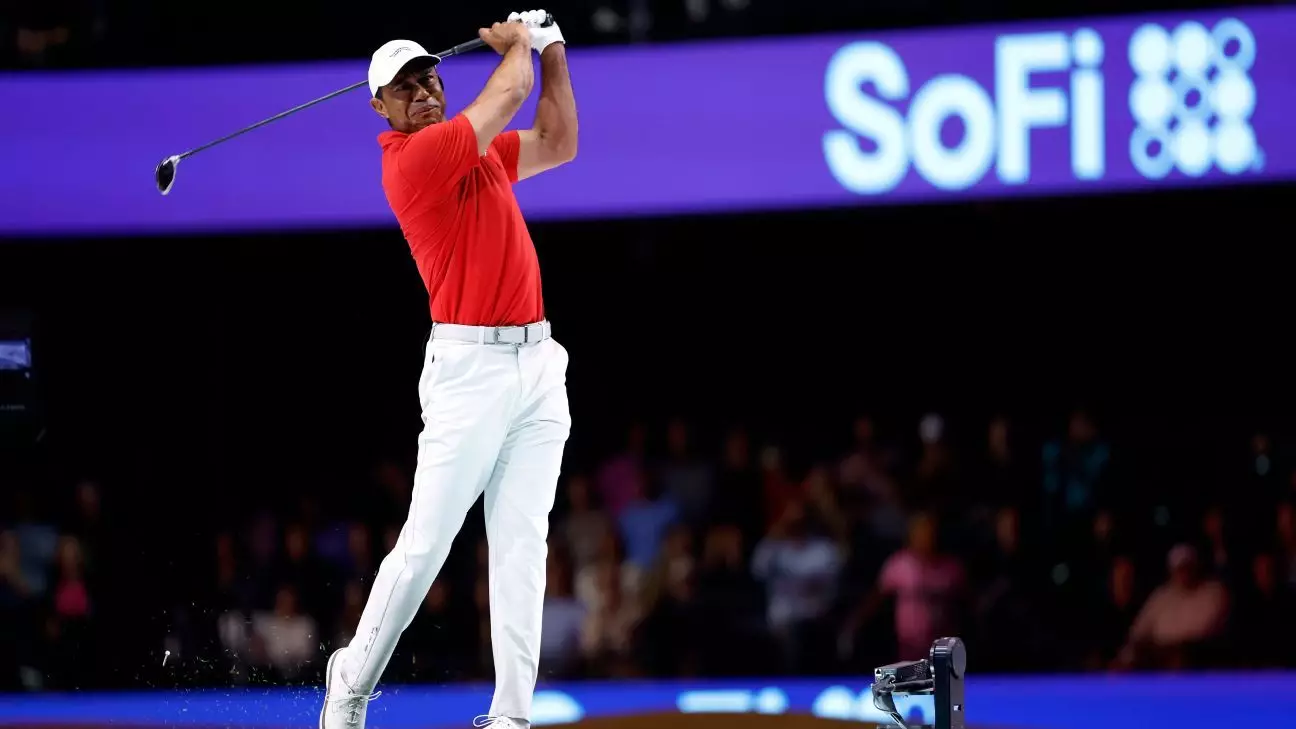In a significant moment for golf, the much-anticipated TGL debut of Tiger Woods took place amidst a backdrop of innovation and excitement. Woods’ entrance, heralded by the iconic theme “Eye of the Tiger,” symbolized more than just another outing for the legendary golfer— it marked a pivotal point in the sport’s evolution, blending traditional elements with a fresh, electrifying flair. The event at the SoFi Center for Palm Beach State College not only showcased Woods’ enduring legacy but also highlighted a groundbreaking approach to golf that aims to capture a new audience.
The TGL’s format—an engaging mix of team and individual play—is designed with spectators in mind, a notable shift from the conventional, often static nature of traditional golf tournaments. On this particular night, Woods played alongside fellow golfers Kevin Kisner and Max Homa against a formidable Los Angeles Golf Club lineup featuring Justin Rose, Collin Morikawa, and Sahith Theegala. The match incorporated a strategic 15-hole setup, with an exciting blend of alternate shot play followed by singles, testing not only skill but also teamwork. Despite the final score of Los Angeles 12, Jupiter 1, the significance of Woods’ presence remains paramount, underscoring his role in pioneering changes within the sport.
Although the scoreline may suggest a one-sided affair, Woods’ journey during the match was rich with character and emotion. The competition’s pace, lasting just over two hours, showcased a relaxed yet intense environment, one that allowed viewers to witness the highs and lows of competitive golf in real time. Woods’ personal performance, which included him only taking a total of 20 shots, revealed a blend of potential yet recognizable challenges. His comical struggles—like the missed putts and a disheartening shot that landed in the water—invited not only laughter from his son, Charlie, but also reminded the audience of the human elements inherent in sports.
An important aspect of TGL is the fan experience. The atmosphere transformed by vibrant introductions and visual displays drew parallels with other popular sports, making golf feel more accessible. Serena Williams, a notable friend of Woods and part of the ownership group for the Los Angeles Golf Club, embodied the duality of support and competition. Her enthusiastic commentary reflected a broader conversation about golf’s potential to attract a youthful, diverse audience. Here, the lines between traditional sport and entertainment blurred, inviting new fans into golf’s fold.
Paving the Way for Future Generations
Woods’ participation also serves as an inspiration for emerging talents in golf. His legacy is not solely defined by victories but also by his willingness to adapt and embrace the evolving landscape of the sport. This TGL format can potentially nurture a younger generation of players who are eager for platforms that showcase their skills in dynamic settings. With the introduction of technology-driven elements, such as the super-high-tech video boards displaying trajectory data, the fan’s understanding and enjoyment of the game can expand significantly.
The TGL debut of Tiger Woods is not merely a momentary spectacle; it represents the dawn of a new chapter for golf. With a fusion of traditional gameplay and modern entertainment, Woods illustrated the vast potential in reimagining how golf is perceived and experienced. As we reflect on this inaugural event, it is evident that the sport stands on the cusp of a significant transformation, one that can engage and inspire golfers and fans alike for generations to come. This evolution is not only about the game; it is about creating a community, fostering connection, and reintroducing the thrill of competition to golf in a whole new light.


Leave a Reply